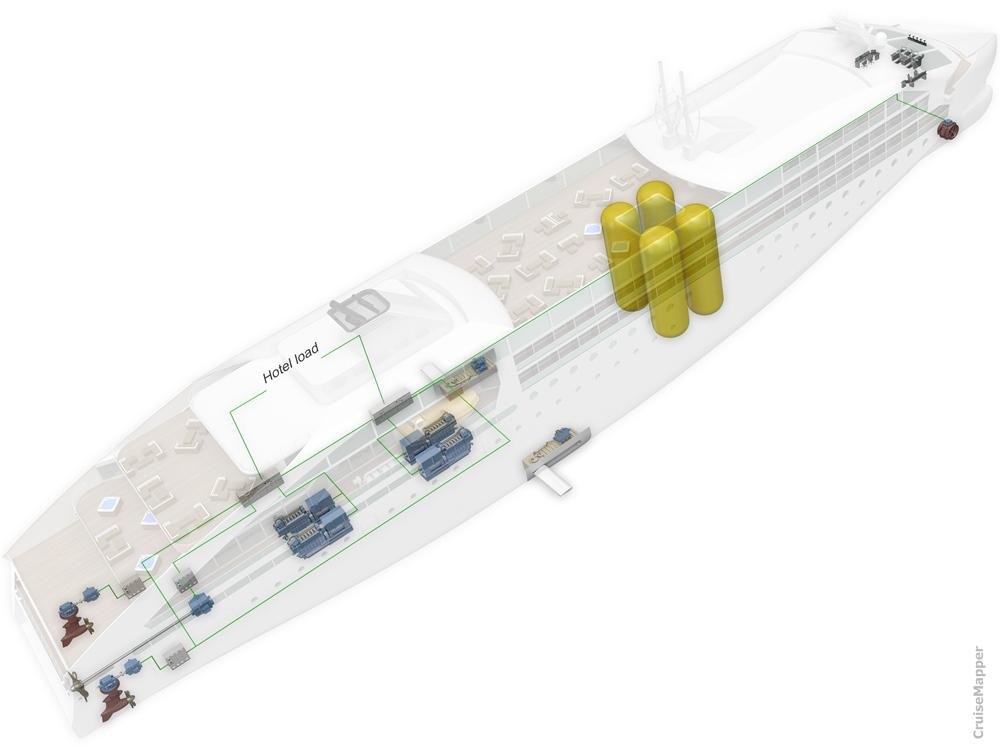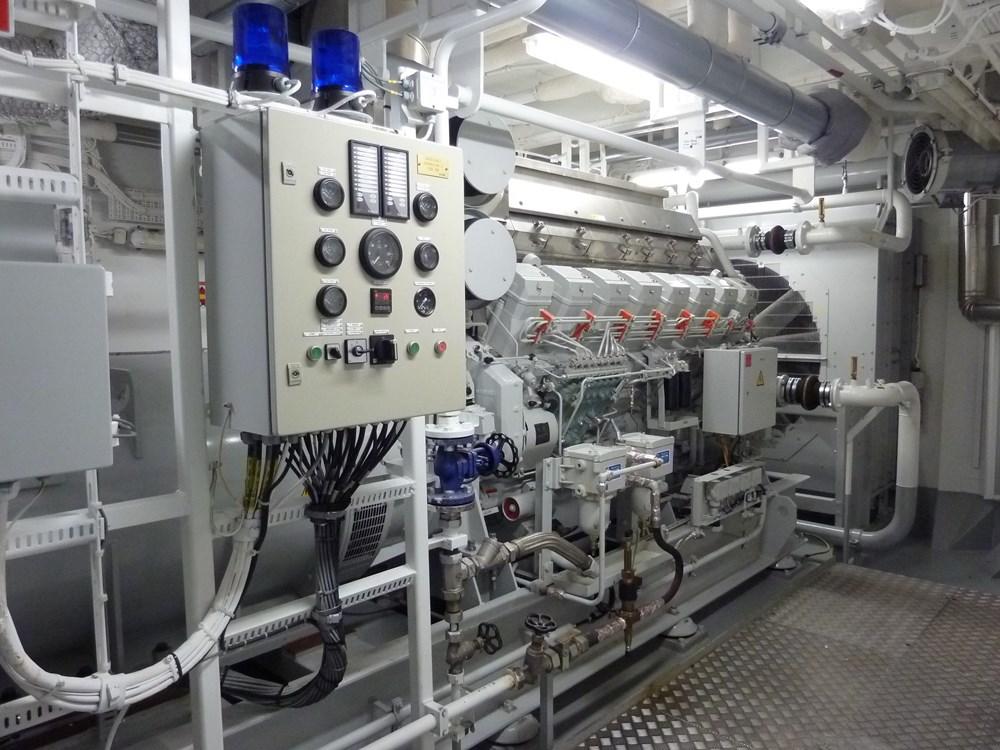Table Of Content

Compare this to most cruise ships and you can see that the QM2 is a water rocket. According to Chavdar Chanev of CruiseMapper.com, the QM2 averages six tons of marine fuel per hour. A smaller ship will use less fuel than a large ship to travel the same distance. Both size and the average speed a cruise ship travels impact how much fuel it uses. On average, a large cruise ship can use up to 250 tons of fuel per day, which is around 80,000 gallons.
Liquified Natural Gas (LNG)
Welcome to High Seas Cruising, your resource for exploring the exciting world of cruise ship travel. We provide expert advice, insightful reviews, and comprehensive guides to help seasoned and novice cruisers create their ideal sea journeys. Whether you desire adventure, luxury, or exploration, High Seas Cruising is your compass to unforgettable cruise vacations. The cost to fuel a cruise ship depends on several factors, including fuel type, cruise ship size, and storage. If the tank is half full, fueling will be almost 165 hours — basically a whole week!
Understanding Cruise Ship Fuel Capacity And Types
Icon of the Seas: Environmental concerns crop up as the world’s largest cruise ship sets sail - The Indian Express
Icon of the Seas: Environmental concerns crop up as the world’s largest cruise ship sets sail.
Posted: Mon, 29 Jan 2024 08:00:00 GMT [source]
They carry power from generators to switchboards, through passageways, public rooms, crew and passenger cabins. If the electrical cables aren't truly redundant, even ships that feature two engine rooms suffer power failure. Hence, the power generation fuel requirements onboard cruises are almost 10 times a standard bulk carrier.
Eco-friendly Technology
10 Top Eco-Friendly Cruise Ships - Marine Insight
10 Top Eco-Friendly Cruise Ships.
Posted: Tue, 23 Jan 2024 08:00:00 GMT [source]
Larger cruise ships with higher passenger capacities typically consume more fuel due to their increased size, weight, and energy requirements. On the other hand, smaller vessels with fewer amenities and a lower passenger capacity may have lower fuel consumption rates. Aside from propulsion, cruise ships require a significant amount of power to operate various systems and facilities onboard.
Speed affects cruise ship fuel consumption because to go faster, vessels must increase the electricity flow to motors. Thus more engines are employed, and it, in turn, increases fuel consumption. For example, Queen Mary 2 consumes 237 tons MGO and 261 tons HFO a day when at full speed.
Through innovative technologies, operational efficiency, and regulatory compliance, the industry continues to evolve towards a more sustainable future. Magnifica has an average speed of 18 knots and a top speed of 22.90 knots. It also has an energy-saving and monitoring system for more environmentally friendly energy use, which reduces fuel consumption. In the case of the Queen Mary 2, the ship is huge at 1,132 feet long and a weight of 151,400 tons. This storied passenger liner is built for speed and is capable of a cruising speed of 29 knots and a top speed of 32.5 knots.

Mitigating Environmental Impact: Innovations in Cruise Ship Fuel Efficiency
This involves leveraging advanced technology systems and weather forecasting to plan routes that minimize fuel consumption while ensuring passenger comfort and safety. By taking advantage of weather patterns, currents, and other factors, ships can navigate the most optimal and fuel-efficient paths. Additionally, the passenger capacity of a cruise ship also affects fuel consumption. More passengers mean more weight to carry, resulting in increased energy requirements for propulsion. The number of passengers also impacts the energy demand for onboard facilities such as accommodations, dining areas, entertainment venues, and other amenities.
Technical Issue Cancels Two Port Visits for Norwegian Cruise Ship
Under such conditions, the consumption increases more than 40% of the eco speed performance. Diesel engines are the traditional type of engines used, but a diesel engine typically consumes a lot of fuel. Moreover, a larger vessel needs larger engines, which will consume more fuel. One of the most successful programs implemented on our ships is Wasted Heat Recovery (WHR). This process works by recovering heat from the engines and transferring it to freshwater piping, which allows us to utilize a free source of energy for improving water production and saving fuel.
Without a source of power, these huge cruise vessels would be nothing more than drifting aimlessly hotels. A large number of older ships use diesel reciprocating engines for generating power for propulsion. Cruise ship engine power is supplied through the transmission to the propeller shafts. Modern ships use either diesel-electric engines or gas turbines as a source of power for propulsion, and for ship's systems. Some of the larger ships depend on two power sources - one for electrical power and one for propulsion. With such changing fuel consumption patterns, cruise ships use a high share of fuel in shipping.
These systems are essential to maintain a comfortable environment for passengers and crew, particularly in warm climates. Cruise operators employ advanced HVAC systems with energy-saving features, such as variable speed pumps and optimized temperature controls, to reduce power consumption while ensuring passenger comfort. As a ship moves faster through the water, the resistance encountered by the hull increases exponentially. The engines need to generate more power to overcome this resistance, leading to higher fuel consumption. Therefore, cruise operators often find a balance between maintaining a reasonable cruising speed to meet itineraries and minimizing fuel usage.
Cruise ships are not only floating luxury resorts, but they are also massive vessels that require significant amounts of fuel to power their engines and propel them through the water. This fuel consumption has far-reaching environmental consequences, including air and water pollution, greenhouse gas emissions, and the potential for oil spills. Alternative fuels, electrification, advanced energy management systems, and ongoing design and construction innovations will continue to improve fuel efficiency.
The new modular technology allows efficient and cost-effective custom-made systems to be built up from various existing and standard parts - mooring winches, anchor cable lifters, warping heads. Both self-unloading dry bulk vessels were China-built (by Chengxi Shipyard Co Ltd / subsidiary of CSSC) and scheduled for deliveries in 2021. RMS Queen Mary 2's four main diesel engines are above the keel, with two smaller gas turbines on top-deck (aft of the funnel).
The cruise industry continues to invest in research and development to explore innovative solutions for reducing fuel consumption and minimizing environmental impact. This includes advancements in battery technology, hydrogen fuel cells, and other renewable energy sources that have the potential to further enhance fuel efficiency and reduce emissions. While there is still progress to be made, these efforts represent a step towards a more sustainable future for cruise ships. The adoption of these fuel efficiency technologies demonstrates the cruise industry’s commitment to sustainability and reducing its carbon footprint.
The exterior appearance of cruise ships is a key factor in their ability to draw passengers. This limits the crew’s options for fuel storage and monitoring on board the ship. The safety of the passengers under operating circumstances is also accounted for by these factors. Although there are many different cruise ship size classifications, large ships are typically defined as those that can accommodate more than 2,500 passengers.
After considering the design and performance factors, the nature of propulsion is the next big step. The changing propulsion design and source decide how much fuel does a cruise ship use. Modern cruise vessels hit speeds of 22 to 24.5 knots during their international voyages regularly. This means their operation in the range of 85% load and above is quite frequent too.
In the electric propulsion systems, the main engine does not utilize any driving fuel. This lowers the consumption significantly in comparison to the standard diesel propulsion. The big sets of alternators produce the power that is useful to drive heavyweight electric motors. As mentioned, a large vessel needs a lot of fuel to power through the water and stay afloat. A small ship can get by on much less fuel while covering the same distance.

No comments:
Post a Comment